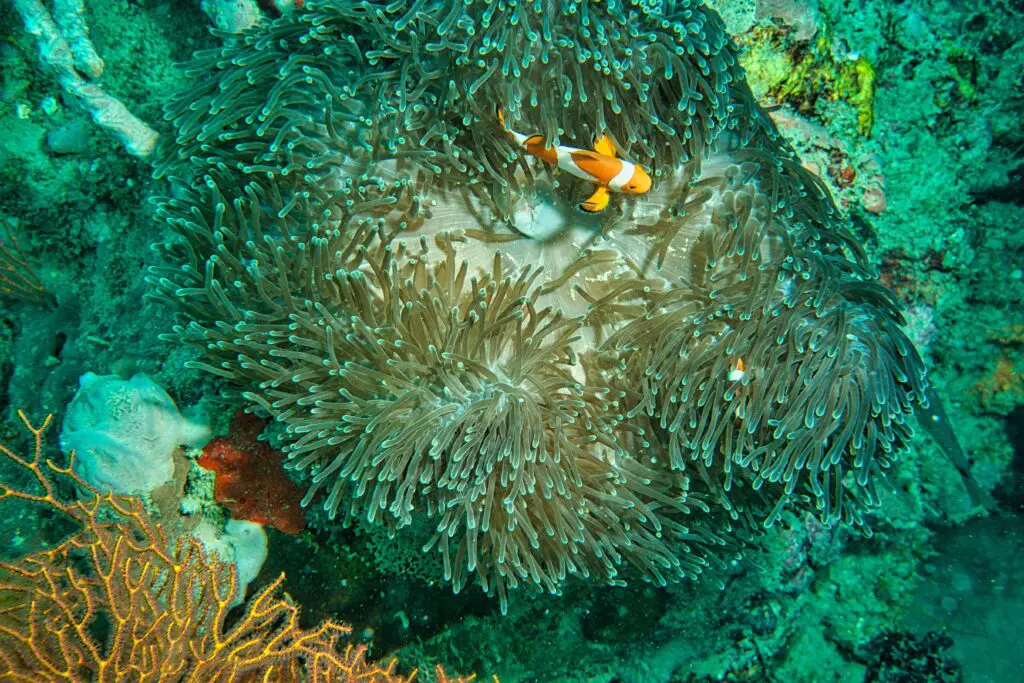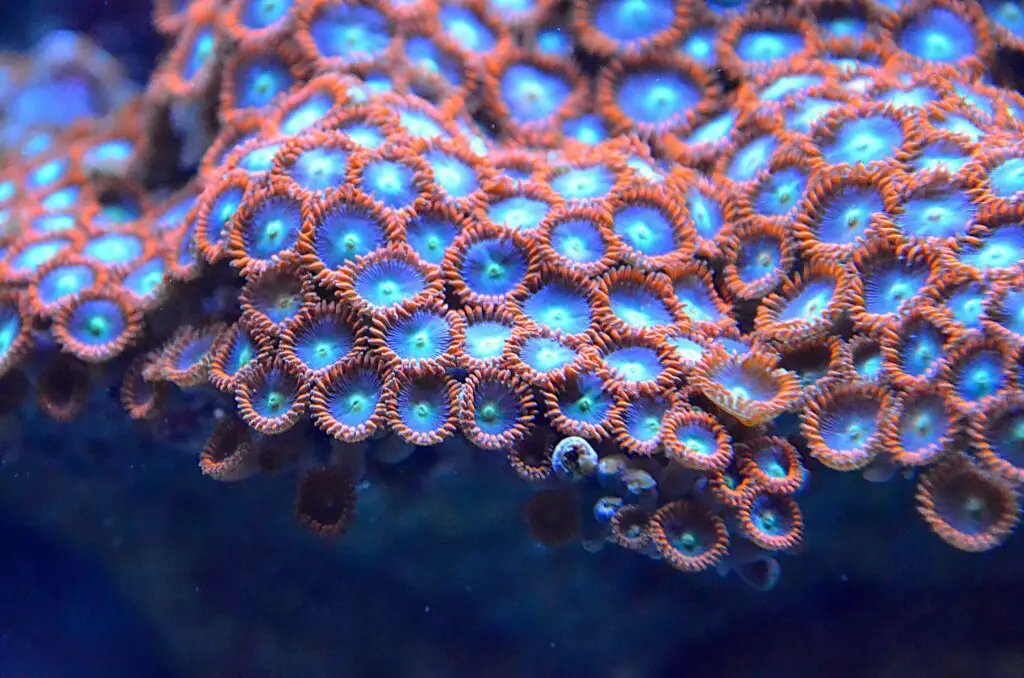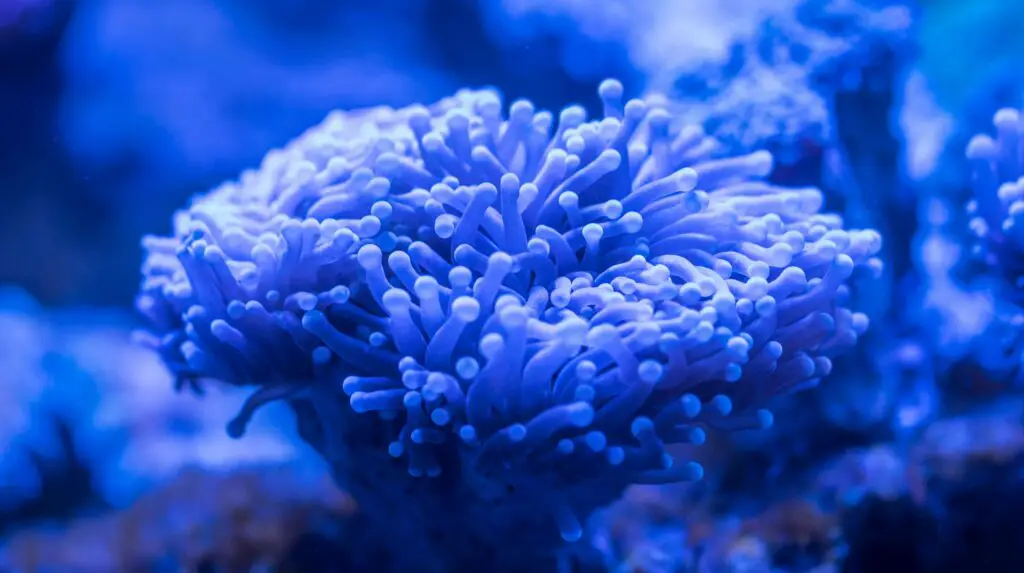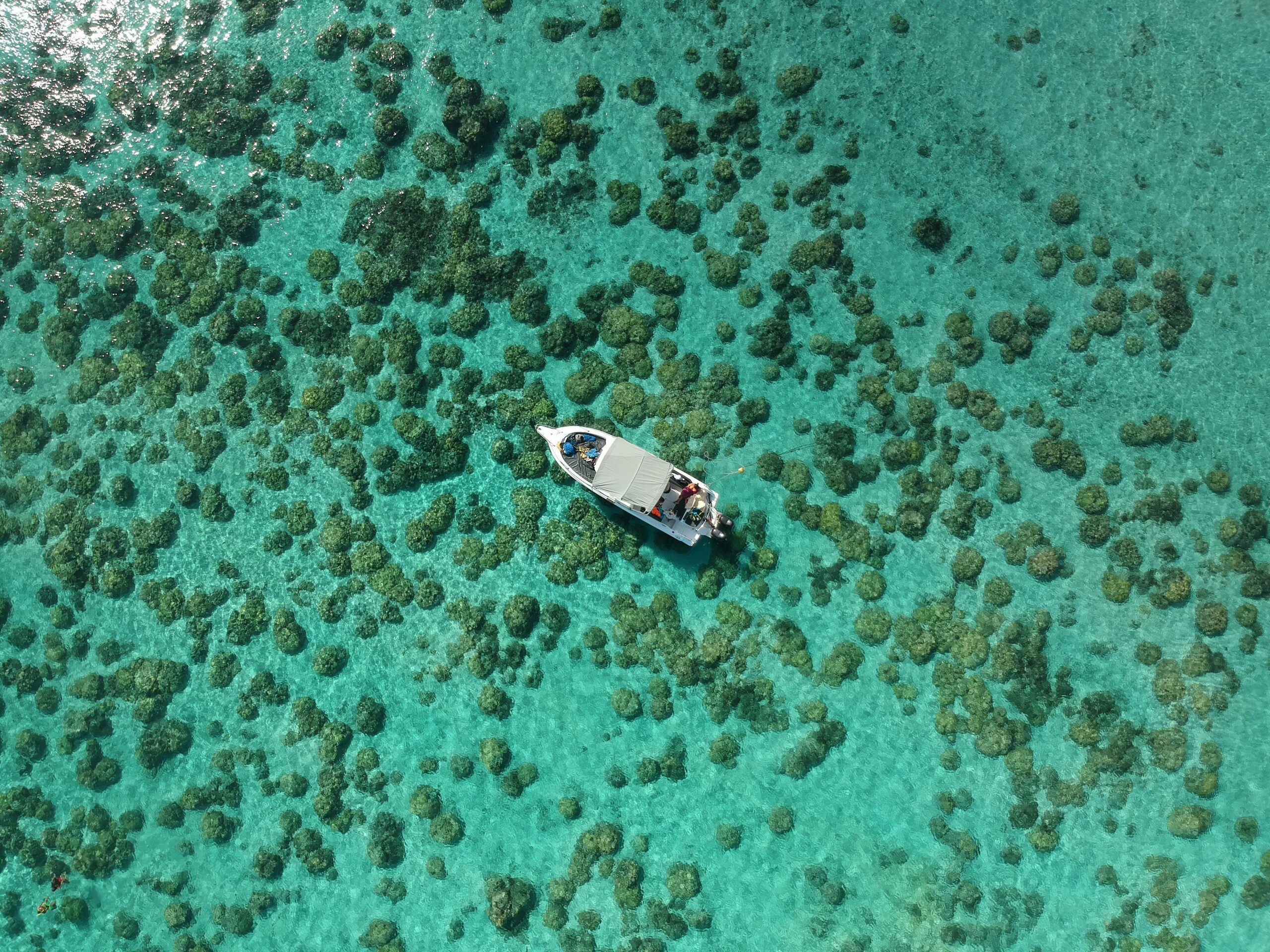You gaze into the crystal blue water, and your eyes widen in wonder. A rainbow of electric colors bursts before you in an underwater kaleidoscope. Fiery oranges, neon pinks, vibrant blues – it’s a living work of art more stunning than any painting. Schools of fish in every shade imaginable dart back and forth, while corals wave their technicolor tentacles in a hypnotic dance.
You can’t take your eyes off the eye-popping palette surrounding you. It’s as if someone spilled a box of crayons into the sea, bringing the reef to dazzling life. Welcome to the vibrant, colorful world hidden beneath the ocean’s surface. A master painter couldn’t dream up a more vivid canvas. Dive in and immerse yourself in the living rainbow.

The Dazzling Display – An Overview of Coral Reef Colors
Coral reefs are a riot of color that would make even the boldest abstract artist envious. The dazzling hues you’ll find in the reef are a rainbow of vibrant pinks, electric blues, neon greens and sunny yellows. These colors don’t just delight our eyes—they serve important purposes for the reef inhabitants.
Pinks and Purples: Stand Out and Be Noticed!
Bright pinks and purples are attention grabbers in the reef. Many reef fish like clownfish, gobies and wrasses sport hues of pink, red and purple. These colors help the fish stand out so they can find each other or attract mates. Some corals like bubble gum coral and carnation coral are pink or red. These popping colors warn other reef critters that the coral’s stinging cells are armed and ready to defend their territory.
Blues and Greens: Camouflage and Confuse
Not all reef colors are meant to attract attention. Some fish like blue tangs, parrotfish and surgeonfish are blue or green. These cool colors help the fish blend into the reef background and hide from predators. Certain corals like staghorn coral and brain coral are also blueish or greenish. For them, the camouflage color acts as sun protection in the bright, shallow waters.
Yellows and Oranges: Poisonous or Playful?
Neon yellow and orange are a warning in nature. For some reef fish and corals, these sunny shades signify toxicity to confuse predators. Others, like clownfish, use the colors playfully. Their bright orange hues, combined with their silly swimming style and sea anemone homes, give them a comical, almost circus-like appearance.
The vibrant and varied colors of the coral reef represent a complex visual language. Whether attracting friends, deterring foes or just looking dazzling, the reef’s palette produces a display of color and life like no other in nature. Next time you explore a coral reef, appreciate not just the beauty but the meaning behind the rainbow of hues surrounding you.
Reds, Pinks, and Purples: Vibrant Coral Reef Inhabitants
The dazzling inhabitants of coral reefs display a rainbow of vibrant colors, especially in the red to purple spectrum. Get ready for a visual treat!
Radiant Red: Anemonefish
Those adorable little clownfish you know from Finding Nemo have a secret superpower—they can live among the stinging tentacles of anemones! Their bright orange and white coloring acts as a warning to predators that they pack a poisonous punch. Anemonefish and their anemone hosts have a symbiotic relationship where they protect each other. How awesome is nature?
Pretty in Pink: Flamingo Tongue Snails
Flamingo tongue snails are one of the pinkest creatures in the sea (and maybe the cutest!). These little molluscs dine on blue-green algae, which contains a pigment that gives the snails their bright pink hue. The snails’ shell has a long, curved shape that allows it to cling tightly to coral surfaces. Picture a whole colony of these pink snails dotting the reef—what an adorable sight!
Purple Passion: Violet Snapper
For a pop of purple, look no further than the aptly named violet snapper fish. These medium-sized fish are a gorgeous deep purple color with iridescent blue highlights. They tend to school in large groups and can change color for camouflage when hunting for small fish and invertebrates to snack on. The vivid purple and blue coloration is more prominent in males, especially during mating season when they are trying to attract a mate. What a stylish species!
The coral reef houses an explosion of energetic colors that simply can’t be captured in a photograph. You’ll just have to see it to believe the eye-popping palette painted across this diverse ecosystem. A rainbow of reds, pinks and purples awaits you under the sea.

Blues and Greens: Cool-Toned Reef Creatures
The coral reef is bursting with creatures in shades of blue and green, beautifully complementing the vibrant reef backdrop. Get ready for a visual feast of cool colors!
Vibrant Blue Chromis
Darting in shimmering schools are the electric blue Chromis, aptly named for their stunning hue. Their metallic blue scales reflect the tropical waters, a dazzling display of iridescence. Watching a school of Chromis swim by is like seeing a piece of the bright blue sky and sea come to life before your eyes.
Turquoise Parrotfish
With turquoise scales and a bumpy, beaked mouth perfect for crunching coral, the Parrotfish is a reef favorite. As Parrotfish munch on coral and algae, they produce fine white sand – up to 200 pounds per year for a single fish! Their turquoise and green blended scales are mesmerizing to observe as they gracefully glide over the reef.
Shy Blue Tang
Made famous by the movie Finding Nemo, Blue Tangs are shy but stunning. With a flat, round body and distinctive dark blue color, the Blue Tang stands out while blending into rocky crevices in the reef. Look closely at its scales to see a mesmerizing mosaic of lighter blue dots and lines. Despite their shyness, Blue Tangs in an aquarium can live 30-40 years and grow almost a foot long.
The cool blues and greens of these reef inhabitants are a sight to behold. Their dazzling colors reflect the beauty surrounding them in their marine home. Take time to stop and truly observe these visual wonders of the natural world. Their calming shades of turquoise and azure are a reminder of the simple pleasures in life and a balm for the senses. What a gift to experience these jewels of the reef!
Oranges, Yellows, and More: Warm Brights on the Reef
Eye-Catching Orange
One of the first colors to catch your eye on the reef will undoubtedly be bright orange. Clownfish, with their distinctive orange and white stripes, dart in and out of anemones. Flame angelfish glow like living embers as they glide through the water. Orange cup corals sprout from the reef, looking like tiny blossoms. Even some sea stars and nudibranchs sport vibrant orange tones. The reef seems to come alive with warmth and energy thanks to these orange accents.
Sunny Yellow
Not to be outdone, yellow puts on an equally dazzling display. Lemonpeel angelfish and yellowtail damselfish add touches of lemon yellow. Pencil urchins, with their long yellow spines, clamber along the reef. Golden sea cucumbers lazily crawl by, emanating a soft yellow glow. Some sponges and soft corals feature yellow coloration as well. The yellow inhabitants of the reef evoke the bright, cheerful sun shining down into the ocean.
Warm Hues United
While orange and yellow are particularly eye-catching, the reef contains a full spectrum of warm colors. You’ll spot red in the plumage of some parrotfish, the spines of long-spine urchins, and some sea stars. Pink soft corals sway with the current, and the red-orange sunset palette of some corals could inspire the most skilled artist. Even warmer browns, tans and golds make an appearance in fish scales, sea shells, and algae.
Together, the vibrant warm colors of the reef create a lively, joyful feel. They energize the waters, bringing light, warmth and visual delight in an environment that we often associate more with blues and greens. The rainbow of coral reef colors is a reminder that beauty can be found even in the unlikeliest of places. So next time you pay a visit to your local aquarium or dive in tropical waters, don’t forget to appreciate the eye-popping palette of the reef.

Creating an Artistic Palette: Tips for Capturing Coral Reef Color
The dazzling hues of coral reefs simply must be captured in all their vibrant glory! With a bit of know-how, you’ll be wielding color like an artist in no time.
Seek out the brightest subjects.
Zero in on parrotfish, clownfish, angelfish and the coral itself. Their electric colors are a photographer’s dream. Wait for these colorful characters to swim into bright patches of sunlight or well-lit areas of the reef. The illumination will make their colors pop even more.
Get creative with your angles.
Don’t just take the standard shot from above. Try capturing your subjects from the side, below or behind to get the most eye-catching abstract arrangements of shape and color. Get up close and personal too—vibrant close-ups of coral, fish and anemones make for stunning abstracts.
Play around with settings.
Adjust your camera settings to really make those colors shine through. Increase the saturation and vibrance for an instant boost in color intensity. Lower the aperture to f/8 or below to get the color “popping” effect of a shallow depth of field. And when shooting with natural light, use the “sunny” white balance preset.
Enhance in post-processing.
Even after getting the perfect shot, you can intensify colors by making some quick edits. In photo editing software like Lightroom or Photoshop, adjust the vibrance, saturation and temperature sliders to your heart’s content. You can also adjust the color balance to make certain hues pop more.
The underwater world of coral reefs is nature’s greatest work of art. With the right techniques, you’ll be creating a masterpiece of your own in no time. So get out there and start crafting a palette as bright and brilliant as the reef itself! The results will be nothing short of eye-popping.
You see now that the ocean contains some of the most glorious colors in nature – an eye-popping palette of vivid hues from the coral reefs and their inhabitants. As you explore the reefs further, keep your eyes open for even more dazzling colors and patterns. Appreciate the beauty that surrounds you under the sea. Remember that we all have a role in safeguarding these living works of art so future generations can also be awed by the ocean’s palette. Let the vibrant coral colors inspire you to care for the reefs. And spread that inspiration to others so together we can preserve the brilliant beauty of the underwater world.





